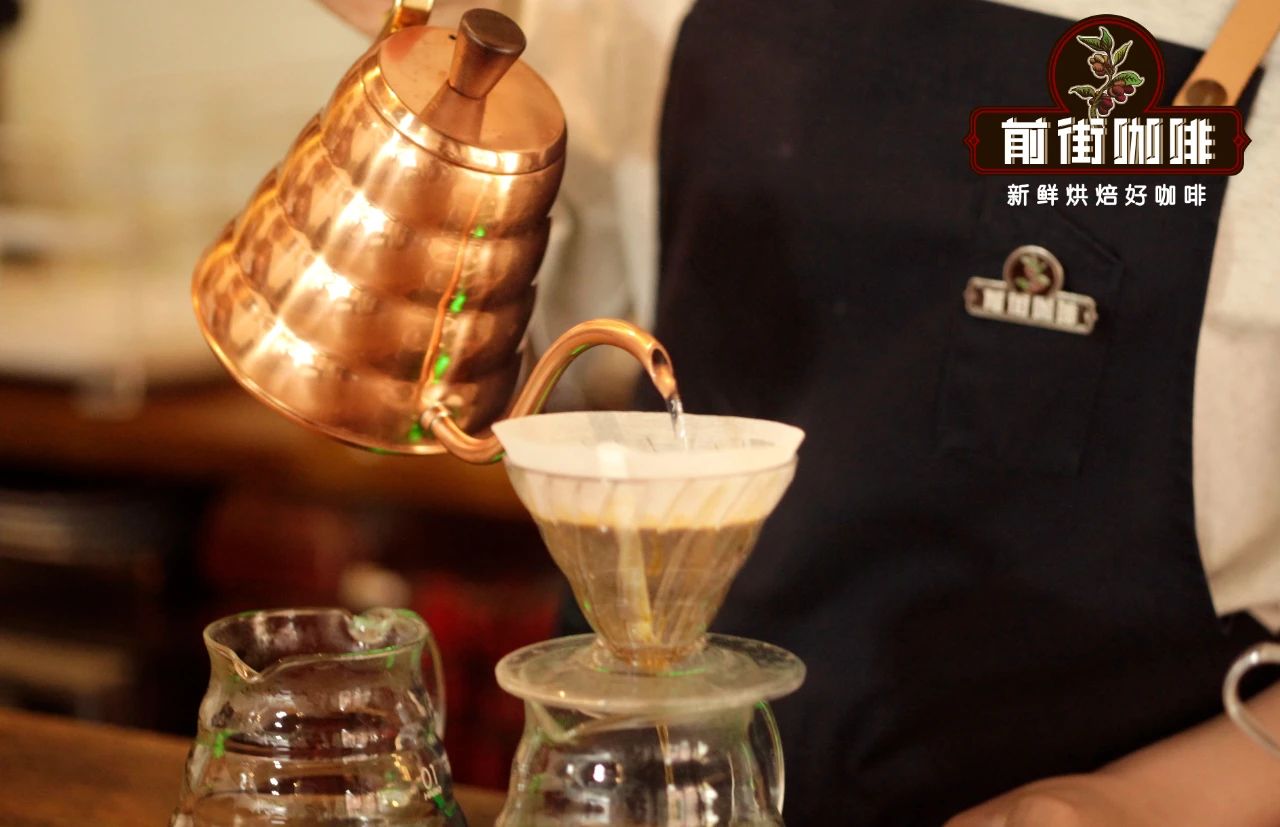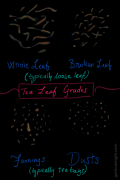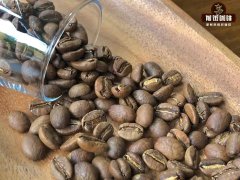Do you need to remove the 15ml at the end of the hand-made coffee? Can I make coffee by hand without the end?
Once, while making coffee, a guest asked, "would you like the end of this coffee?"

Caudal segment
After some understanding, the so-called removal and retention of the tail section refers to the removal of the filter cup (interception) when there is 15-20ml coffee liquid left in the filter cup at the last stage of brewing. Friends who use this method of removing the end all think that the end will have a bitter, astringent, miscellaneous taste, and removing the end can reduce the unpleasant experience caused by bitterness and miscellaneous taste. ]

The main culprit of bitterness is the end?
Most of the time, people drink bitterness and miscellaneous taste in the hand-brewed coffee, and then feel a lot of relief by abandoning the end of the coffee during the brewing process. It is believed that the bitter taste comes from the end of the coffee.
Qianjie learned with a number of partners who use this method to make coffee that river closure is roughly divided into two situations: the first is to give up the remaining 15-20ml coffee liquid after injecting the target amount of water (calculated according to the proportion of powdered water); the second is to give up the remaining 15-20ml coffee liquid out of habit to inject 15-20ml more water than the target water.

The difference between the two is that the actual powder-to-water ratio of the former is larger than that of the plan, while the latter is roughly the same as the plan (note that the word is roughly, depending on the cook's handling of the interception). To test both cases in the previous street, the beans chose washed Yega and Brazilian red bourbon to represent the degree of medium-shallow baking and medium-deep baking, respectively.
By tasting the coffee liquid at the end of the cut-off, the comparison is as follows:

This is the result obtained by using the hand cooking parameters of Qianjie, and is for reference only.
In this regard, the coffee tail liquid injected with normal powder-water ratio does not appear bitter miscellaneous and other negative flavor, that is, even if the normal drop into the lower pot will not appear bitter mixed taste. The tail liquid of the second method does have some negative flavor, but it should be clear that this section of coffee itself should not appear in the coffee, the powder-to-water ratio is not right.
Move the focus from the trailing segment to the parameter
Maybe many friends will say, "the end I rushed out is really bitter and mixed smell." At this time, we should pay more attention to the parameters of cooking. Normally, after the formulation of the brewing plan and the complete implementation of the brewing plan, there is a bad taste in the coffee, then there is either a bean problem or a problem with the brewing plan.
The quality of coffee beans does have a great impact on the brewing flavor, such as the coffee beans with the highest grade of coffee production, which basically do not need to remove the tail segment and will not have a negative taste. While some lower-quality coffee beans are more likely to show negative taste, in terms of probability, removing the end can indeed reduce the bitterness and miscellaneous taste.

In the brewing scheme, such as the commonly used brewing parameters in Qianjie, 15g coffee powder, 225g 91 ℃ hot water is injected, and the grindness is 80% of the pass rate of No. 20 sieve. In this way, there is no need to cut off the water and maintain the ratio of powder to water at 1:15. Of course, sometimes the plan can't keep up with the change. "river closure" is a response taken by brewers based on their own experience and actual situation, thinking that allowing it to continue will cause bitterness in the coffee.
In itself, "river closure" is a means to save coffee, which relies heavily on the judgment of brewers. Clogging occurs most often in the coffee powder layer, and the filter cup is removed in order to remove the filter cup. But turning the action of "going to the end" as part of the cooking plan adds a bit of uncertainty to yourself (how to control the amount of your closure, the accuracy of the powder-to-water ratio is out of control).

Finally, to sum up, bitter and miscellaneous taste seems to appear at the end, but with high-quality coffee beans, the correct cooking plan, it is difficult to produce bitter mixed taste. Therefore, removing the tail segment is a way, but we should look for the reason in the coffee bean and brewing scheme.
Important Notice :
前街咖啡 FrontStreet Coffee has moved to new addredd:
FrontStreet Coffee Address: 315,Donghua East Road,GuangZhou
Tel:020 38364473
- Prev

What is the meaning of OP BOP FOP acronym in black tea? what is the best level for the international classification of black tea?
When it comes to the grade of black tea, it is usually followed by the name of the producing area, such as OP, BOP, FOP, TGFOP and so on. Friends should be no stranger to this. Most of these graded terms appear in single-product black tea that is not mixed (meaning different origin, season, or even kinds of tea are mixed together) and made from "Orthodox" traditional black tea system. In the most
- Next

Columbia Huilan Montblanc Manor washing flowers see coffee beans Rosa coffee beans how to wash?
Colombian rose summer mixed flowers see coffee bean producing area: Columbia Cymbidium Manor: Montblanc Manor altitude: 1900 meters varieties: Rossia Kaddura Kaduai treatment method: washing flavor: pink pepper, chamomile, mandarin, honey, almond coffee producing area Cellan Province of Colombia is located in Colombia at the intersection of the central and eastern mountains of the Andes.
Related
- Beginners will see the "Coffee pull flower" guide!
- What is the difference between ice blog purified milk and ordinary milk coffee?
- Why is the Philippines the largest producer of crops in Liberia?
- For coffee extraction, should the fine powder be retained?
- How does extracted espresso fill pressed powder? How much strength does it take to press the powder?
- How to make jasmine cold extract coffee? Is the jasmine + latte good?
- Will this little toy really make the coffee taste better? How does Lily Drip affect coffee extraction?
- Will the action of slapping the filter cup also affect coffee extraction?
- What's the difference between powder-to-water ratio and powder-to-liquid ratio?
- What is the Ethiopian local species? What does it have to do with Heirloom native species?

